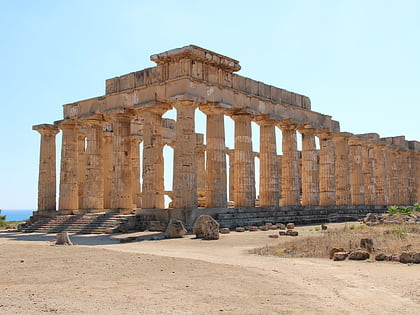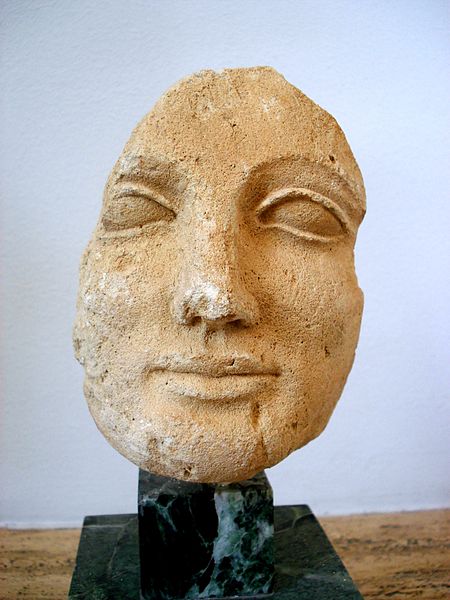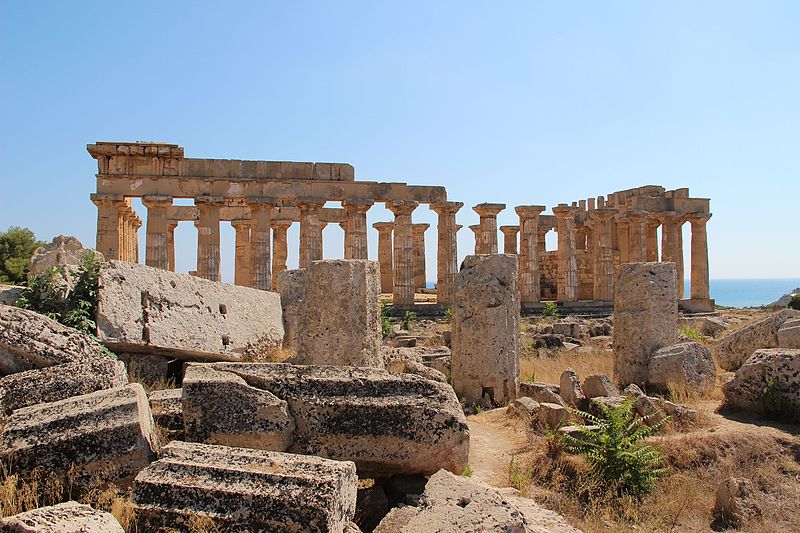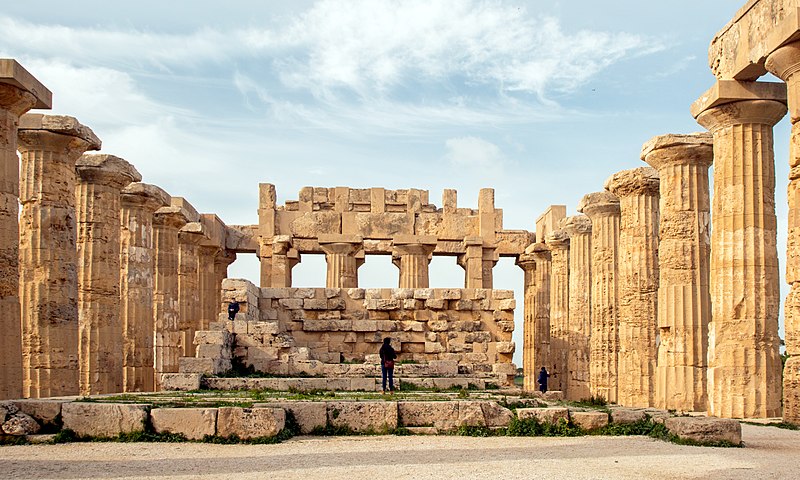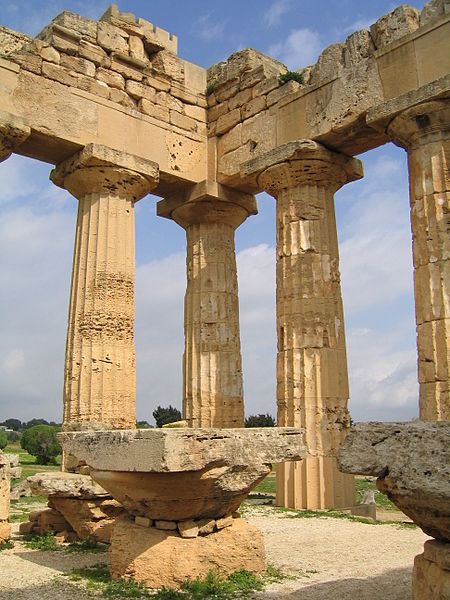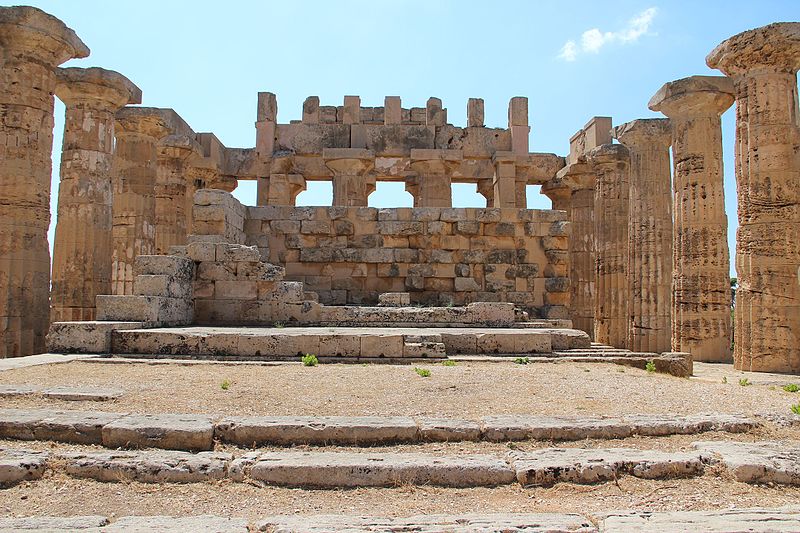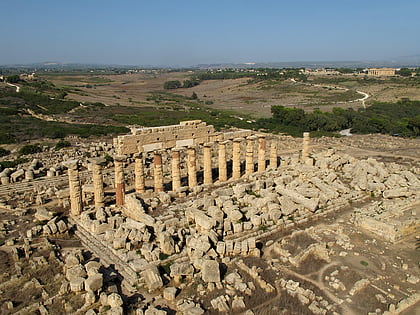Temple E, Selinunte
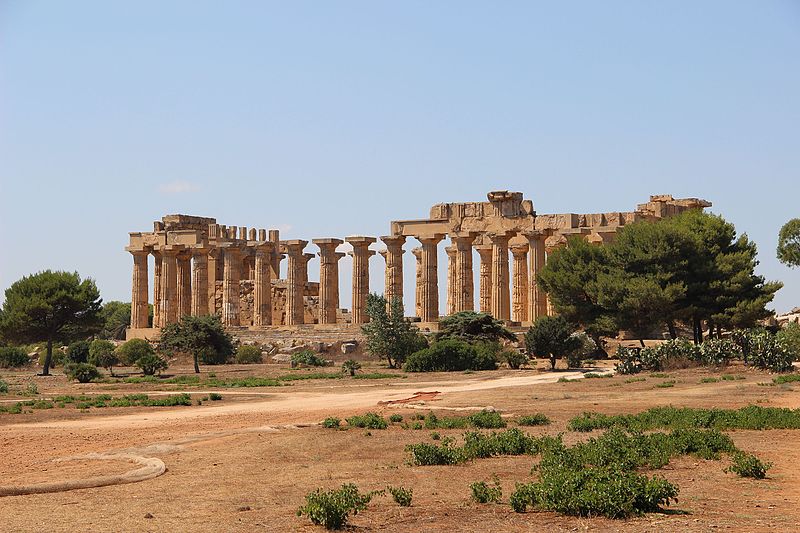
Facts and practical information
Temple E, nestled in the ancient ruins of Selinunte on the southwestern coast of Sicily, Italy, stands as a testament to the grandeur of Greek architecture and the rich history that characterizes this archaeological site. This Doric temple, constructed in the mid-5th century BC, was one of the several sacred buildings within the city's acropolis and is a remarkable example of classical antiquity.
The ruins of Temple E are a major attraction for tourists visiting Selinunte, offering a glimpse into the religious and cultural practices of the ancient Greeks in Sicily. The temple's layout is typical of Greek temple design, with a colonnade surrounding a central naos, or cella. Although the structure lies mostly in ruins today, several of the original columns have been re-erected, giving visitors a sense of the temple's original majesty and scale.
Archaeological studies suggest that Temple E was dedicated to Hera, the Greek goddess of marriage and childbirth, although this has been a subject of debate among historians. The temple's architectural features, including the size of the columns and the style of the capitals, are indicative of the classical period of Greek architecture.
Visitors to Temple E can walk among the ruins and marvel at the craftsmanship of ancient builders. The site also provides panoramic views of the surrounding landscape, including the Mediterranean Sea and the rest of the Selinunte archaeological park. The park itself contains several other temples, ancient fortifications, and remnants of the city's residential and commercial areas, making it a rich historical experience.
Temple E – popular in the area (distance from the attraction)
Nearby attractions include: Temple C, Temple F, Riserva naturale Foce del Fiume Belice e dune Limitrofe.
